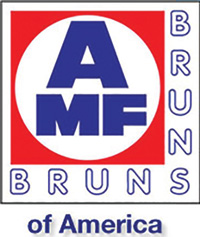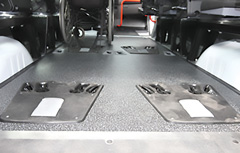
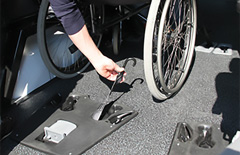
Driver Training Key For Safe Passenger Transportation
The National Highway Safety Administration (NHTSA), the National Council on Disability (NCD) and the National Transportation Safety Board (NTSB) have concluded that the best protection in the event of a collision or sudden stop is a shoulder and lap belt system. For wheelchair passengers, combine that system with a four point retractor wheelchair anchoring system and height adjustable head & backrest and you have a securement system which stabilizes passengers in a rear or frontal collision, reducing the chance for injury and trauma.
While equipping vehicles with the proper securement systems seems like a logical solution, it’s only one part of an equation with many moving parts when it comes to protecting both wheelchair and non-wheelchair passengers.
For example, an NHTSA study determined that out of the 61 school bus passengers killed between 2005-14, only four were wearing seat belts. Most passengers had access to seat belts. Another NHTSA study analyzed National Electronic Injury Surveillance System (NEISS) data on motor vehicle incidents from 1991-95. Conclusion: 35% of injuries or deaths of passengers were due to improper or no wheelchair securement.
The American Bar Association says transport companies can be held liable for passengers injured in collisions or sudden stops in which their wheelchairs were improperly secured to the vehicle.
From afar it would appear that installing state-of-the-art securement systems that meet government safety and performance regulations would be the end of the story. However, assuming that passengers would automatically use securement equipment just because it was available was a huge miscalculation by the mobility industry.
“Providing safe transportation begins with having access to the right equipment. That’s a great start,” says Peter Haarhuis, CEO of AMF-Bruns of America. “What’s missing is the driver training component.”
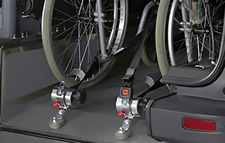
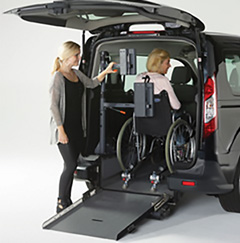
Driver Education
Driver training must touch on the following components:
Creating Awareness
Over and above driver training, transport companies, organizations and authorities have an inherent responsibility to promote securement equipment usage to:
Additional awareness can be created through traditional marketing tactics such as vehicle signage, bus shelter signage, advertising and collateral materials, i.e. flyers, brochures, posters.
Balancing Act
“It’s all about balance,” adds Haairhuis. “The mobility industry’s safety pendulum shouldn’t sway one way or the other. Having the right securement equipment along with consistent driver training increases the odds dramatically in providing safe transportation for both wheelchair and non-wheelchair passengers.”
There you have it. The best of both worlds. Innovative securement equipment and world class training. For more information on training, go to:
NTSB: www.ntsb.gov
NHTSA: www.nhtsa.gov
NCD: www.ncd.gov
------------------------------------------------------------------------------------------------
AMF-Bruns is a leading vehicle modification company specializing in wheelchair securement and occupant restraint systems.
Author: Rick Iacoboni, Marketing Manager at AMF-Bruns of America, a global wheelchair securement and occupant restraint systems. For more information go to www.amfbrunsamerica.com.
